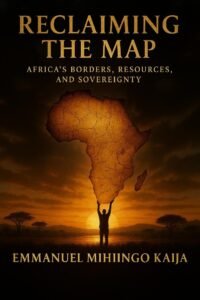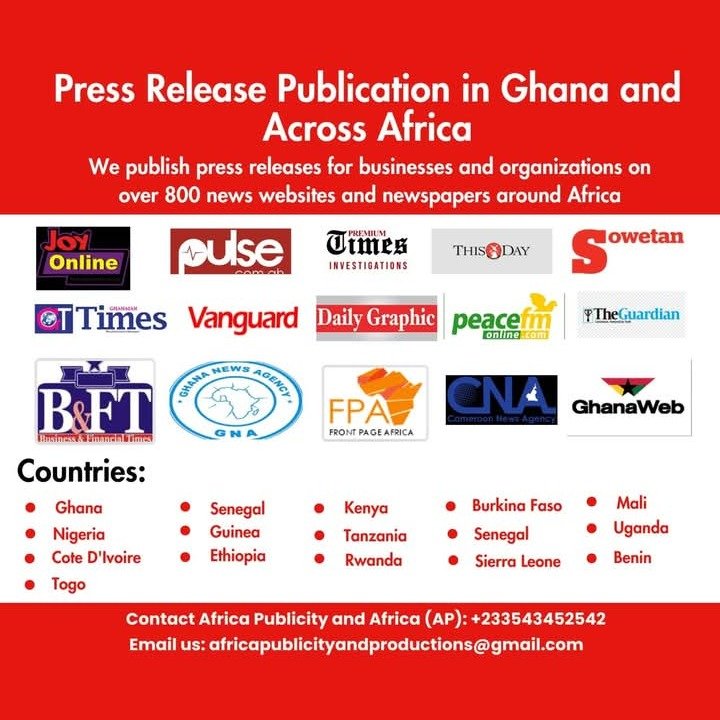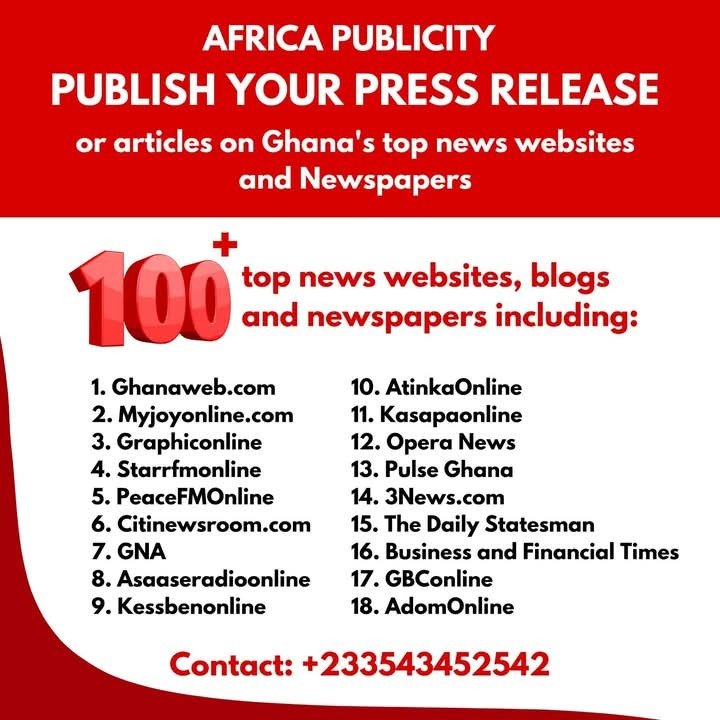Chapter 5: The Digital Map War.
By Emmanuel Mihiingo Kaija
emkaijawrites@gmail.com

Introduction
Maps are guilty– They’re never virgins. They are instruments of power, shaping how nations are seen, how borders are drawn, and how resources are controlled. To map a land is to name it, to define it, and to claim it. In Africa, the twenty-first century has revealed a new battlefield not of guns but of satellites, algorithms, and digital grids — a cartographic war fought in the skies and in the cloud. This is the Digital Map War, where Google Maps, foreign military-industrial systems, and Chinese Belt and Road initiatives redraw Africa’s landscapes in pixels and data streams, often without African consent. As the proverb from the Shona of Zimbabwe reminds us, “The one who names the land owns it.” Today, the naming is digital, yet the ownership is no less contested.
The stakes are enormous. According to the African Union’s Agenda 2063 Data Report (2023), 90% of Africa’s geospatial infrastructure — including digital maps, GPS navigation, and satellite imaging — is currently managed or hosted by foreign companies, primarily in the United States, Europe, and China. Only 10% is locally controlled. Furthermore, the United Nations Office for Outer Space Affairs (UNOOSA) notes that 65% of Africa’s satellite imagery used in agriculture, mining, and security is purchased from foreign providers at costs reaching $500 million annually, a staggering outflow of capital that could otherwise strengthen local industries. Africa’s skies are mapped, but its people rarely hold the keys to the maps. This digital dependency mirrors the old colonial maps where European explorers drew borders with rulers and ink, slicing through kingdoms and kinships.
Consider the example of Google Maps. It is estimated that 95% of African smartphone users rely on Google Maps for navigation, logistics, and daily mobility (GSMA Report, 2024). Yet, the geospatial data collected by these users is stored on servers outside Africa, feeding into a global system where Africa becomes visible only through someone else’s lens. Even more troubling, strategic locations — military bases, government buildings, and mining sites — are sometimes blurred or misrepresented, reflecting the priorities of foreign powers rather than African security. The United States Department of Defense remains one of the largest stakeholders in the GPS constellation, originally developed as a military project. Thus, every Uber ride in Nairobi, every boda-boda delivery in Kampala, and every shipment leaving Lagos is indirectly dependent on foreign-controlled military technology. The cartography of daily life has become a quiet form of dependency.
China’s Belt and Road Initiative (BRI) adds yet another layer to this struggle. Through companies like Beidou Navigation Satellite System (BDS), China has expanded its mapping and satellite coverage across Africa, often linking it to infrastructure projects — roads, railways, and ports. According to the China-Africa Research Initiative (Johns Hopkins University, 2023), more than 40 African countries have signed agreements that give Chinese firms partial or full access to local geospatial data. In Kenya, BRI mapping technologies were embedded in the construction of the Standard Gauge Railway, with most of the data flowing back to Chinese servers. This echoes what Kenyan philosopher Ali Mazrui once warned: “Africa risks becoming a theatre where foreign empires rehearse their power.” The rehearsal today is digital, invisible, yet deeply consequential.
The consequences go beyond economics and sovereignty — they touch culture, identity, and theology. When maps erase indigenous place names, replace them with colonial ones, or distort natural boundaries, they participate in what Ngũgĩ wa Thiong’o called the “cultural bomb” — the annihilation of a people’s memory of who they are. In Uganda, for instance, several sacred Buganda and Busoga cultural sites are marked on Google Maps as mere “forests” or “reserves,” stripped of their ancestral meaning. In Nigeria, oil pipelines appear neatly drawn, while entire fishing villages devastated by spills remain invisible. What is mapped is deemed real, and what is left unmapped risks being forgotten. Digital cartography becomes digital theology — defining what is seen, and what is erased.
This chapter, The Digital Map War, journeys into the heart of this struggle. It investigates how Africa’s geospatial sovereignty is under siege, how digital colonialism manifests in satellites and apps, and how African voices are reclaiming the right to map their own lands. It combines statistics, case studies, and poetic reflections to argue that maps are no longer mere tools of orientation — they are weapons of influence. As the Yoruba proverb says, “He who holds the drum determines the rhythm.” In the digital age, the drum is data, and the rhythm is Africa’s future.
Part 1: The Invisible Lines
The Sahara stretches like an ocean of gold, the Congo hums with the pulse of untold histories, and the Serengeti whispers the rhythm of life itself, the land speaks in voices older than memory, yet these voices are being cataloged, quantified, and controlled by systems whose operators may never feel the heat of the sun on their backs or hear the laughter of the children in their villages; over 80% of high-resolution satellite imagery of African cities is owned or controlled by foreign corporations, leaving local agencies without access to their own landscapes, a stark manifestation of digital colonialism that shadows the continent’s sovereignty, while in Kenya, the number of Chinese construction workers increased from 3,430 in 2012–2014 to over 8,000 by 2017, illustrating the deepening presence of Belt & Road Initiative operations that have funneled $39 billion into African infrastructure projects in the first half of 2025 alone, subtly embedding geospatial oversight in railways, ports, and industrial zones, and as GPS networks—originally designed for U.S. military use—circle above, the very coordinates of Africa are under the gaze of systems beyond local control, a reality compounded by the fact that more than 70% of African nations have national spatial data infrastructures yet face challenges in collaboration, capacity, and equitable access, leaving the farmer in Mali, the fisherman on Lake Victoria, and the child in Nairobi’s informal settlements invisible to the digital eye, while initiatives like Digital Earth Africa transform decades of satellite imagery into actionable insights, yet must contend with limited local expertise, insufficient funding, and the persistent weight of dependency on non-African technologies, and as Earth observation satellites and corporate mapping platforms trace every hill, river, and village, ethical and strategic questions emerge: in 2023, bilateral investments between Egypt and China totaled $14 billion, reflecting how economic entanglements intersect with geospatial influence, while OpenStreetMap contributions remain disproportionately from non-African participants, omitting cultural and geographic nuances critical for true local representation, and as international tech giants like Google, Maxar, and Airbus dominate the collection, storage, and monetization of geospatial data, it becomes evident that maps are not neutral artifacts but instruments of power, capable of shaping economic flows, political influence, and national identity, and yet Africa is not powerless, for continental initiatives, from the African Space Agency to local GIS programs, are reclaiming the right to chart their own lands, training engineers, building satellites, and crafting legal frameworks to safeguard their geospatial sovereignty, and as this digital map war unfolds, the question remains not only who controls the pixels but who controls the story, for the Akan proverb rings true across every savanna, river, and city: “He who maps the land can also claim the soul of the people.”
Part 2: The Rise of Digital Mapping in Africa
The Nile’s waters nourish the land in the heart of Africa and the savannas stretch beneath the equatorial sun, a quiet revolution is unfolding. Over 80% of high-resolution satellite imagery of African cities is controlled by foreign companies, leaving local agencies with limited access to their own landscapes. Yet, amidst this digital divide, a new wave of innovation is emerging. In 2025, African startups are designing, launching, and operating satellites, transforming the continent from a passive recipient of data to an active producer. These homegrown initiatives are not only providing critical data for agriculture, disaster management, and urban planning but are also challenging the dominance of foreign entities in Africa’s geospatial landscape.
The Belt and Road Initiative (BRI), China’s ambitious infrastructure project, has deepened its footprint in Africa. In the first half of 2025 alone, Chinese companies signed investment and construction contracts worth $39 billion across 176 deals under the BRI, surpassing the full-year total of 2024. These projects, ranging from railways to ports, are not just reshaping Africa’s physical infrastructure but are also embedding Chinese influence in the continent’s digital mapping systems. For instance, the China Development Bank released a $254.76 million loan to Nigeria for the construction of a railway project connecting the northern states of Kano and Kaduna, highlighting China’s role in shaping Africa’s transportation and, by extension, its geospatial data landscape.
Despite these challenges, Africa is making strides toward reclaiming its digital sovereignty. Over 70% of African countries have developed national spatial data infrastructures (NSDI), aiming to enhance data accessibility and interoperability. However, the effectiveness of these infrastructures varies, with some nations still grappling with issues of data quality, governance, and capacity building. In countries like South Africa, Senegal, and Ghana, NSDI readiness indices are relatively high, indicating a strong foundation for geospatial data management. Conversely, nations such as Tanzania, Zimbabwe, and Malawi face significant challenges in implementing effective NSDI frameworks.
OpenStreetMap (OSM), the collaborative mapping platform, has also seen increased activity in Africa. Ahead of the State of the Map 2020 conference, OSM Africa surveyed community leaders in 52 out of the 55 African countries to assess the state of OSM on the continent. While this indicates a growing interest in open mapping, the contributions remain disproportionately from non-African participants, highlighting the need for greater local involvement to ensure maps reflect the continent’s diverse realities.
As Africa continues to navigate the complexities of digital mapping, the question remains: Who controls the narrative of the continent’s geography? With foreign powers investing heavily in infrastructure and data collection, and local initiatives striving to build capacity and autonomy, the battle for Africa’s digital map is not just about technology but about identity, sovereignty, and the right to define one’s own space in the world.
Part 3: The Battle for Geospatial Sovereignty
In the broad expanse of Africa our homeland, where the Sahara’s golden sands meet the lush rainforests of the Congo, and the Serengeti’s plains stretch endlessly beneath the equatorial sun, a silent war is unfolding — a battle not fought with weapons, but with data, coordinates, and algorithms; over 80% of high-resolution satellite imagery of African cities is controlled by foreign companies, leaving local agencies with limited access to their own landscapes, a stark reminder of the enduring legacy of colonialism in the digital age, while in Kenya, the number of Chinese construction workers increased from 3,430 in 2012–2014 to over 8,000 by 2017, reflecting China’s growing influence in the region, and in the first half of 2025 alone, Chinese companies signed investment and construction contracts worth $39 billion across 176 deals under the Belt and Road Initiative, surpassing the full-year total of 2024, and in Nigeria, the China Development Bank released a $254.76 million loan for the construction of a railway project connecting the northern states of Kano and Kaduna, highlighting China’s role in shaping Africa’s transportation infrastructure, and despite these foreign investments, over 70% of African countries have developed national spatial data infrastructures, aiming to enhance data accessibility and interoperability, yet challenges remain in achieving effective collaboration among data-driven organizations, and initiatives like Digital Earth Africa are transforming decades of satellite imagery into actionable insights, enabling sustainable development, resource management, and climate resilience across the continent, yet even these ambitious programs must contend with limited local expertise, insufficient funding, and the heavy legacy of dependency on non-African technological systems, and as Earth observation satellites, military-controlled GPS networks, and corporate mapping platforms chart every hill, river, and village, questions of sovereignty and ethical stewardship arise, for in 2023, bilateral investments between Egypt and China totaled approximately $14 billion, deepening geospatial entanglements alongside economic dependencies, while OpenStreetMap contributions remain disproportionately from non-African participants, leaving critical cultural and geographic nuances unrepresented, emphasizing that maps are not neutral reflections of reality but instruments of power, curation, and control, capable of shaping narratives, economic flows, and political influence, so that the struggle for Africa’s geospatial autonomy is not merely about data, coordinates, or infrastructure but about reclaiming the authority to tell the continent’s own story, to safeguard its people, lands, and histories from being abstracted into foreign databases, and to ensure that as satellites orbit above, the land below remains in the hands and hearts of those who truly belong to it, echoing the Akan proverb: “He who maps the land can also claim the soul of the people.”
Part 4: Digital Colonialism and Foreign Control
Fom the plateaus of Ethiopia to the delta of the Niger, the quiet beat of geospatial data is a new form of colonialism, a mapping of sovereignty that is measured in pixels and satellites rather than treaties and borders, where over 80% of high-resolution imagery is controlled by foreign corporations, and over 70% of African nations rely on national spatial data infrastructures still hampered by funding gaps, limited expertise, and inconsistent governance, while Google Maps alone claims data coverage that touches 95% of Africa’s urban centers, yet omits or misrepresents informal settlements where millions live, reflecting the selective lens of corporate oversight; meanwhile, the Belt & Road Initiative has financed $39 billion worth of projects across 176 deals in the first half of 2025 alone, embedding Chinese geospatial influence in ports, railways, and industrial zones, and in Nigeria, a $254.76 million railway loan by the China Development Bank further illustrates the intersection of infrastructure and digital mapping control, while in East Africa, drone surveys by foreign companies catalog thousands of hectares of farmland without local oversight, in some cases influencing land valuation and investment decisions, highlighting how mapping becomes both tool and instrument of power, and OpenStreetMap, though open-source, reveals its own imbalances as contributions are disproportionately from non-African participants, leaving cultural, geographic, and socio-political realities underrepresented, even as African Space Agency initiatives, Digital Earth Africa, and localized GIS projects attempt to reclaim agency, demonstrating measurable impact: by 2024, Digital Earth Africa had processed over 5 petabytes of satellite imagery, supporting disaster response, agriculture, and water management for over 30 countries, yet funding disparities remain stark as 65% of geospatial technology investment in Africa still comes from foreign donors or corporations, and the stakes are rising as U.S. GPS systems and EU Galileo satellites continue to monitor and commercialize African territory, illustrating that digital mapping is not neutral but a battlefield where power, economics, identity, and sovereignty intersect, and where control over coordinates equates to influence over commerce, governance, and the very narrative of the continent, affirming the Akan proverb: “He who maps the land can also claim the soul of the people,” reminding every policymaker, engineer, and citizen that in the age of digital cartography, control over data is control over destiny, and Africa must navigate, negotiate, and innovate to ensure its lands are mapped not as commodities but as the living, breathing home of its people, culture, and future.
Part 5: Case Study — Chinese Belt & Road Mapping Projects
The Chinese Belt & Road Initiative (BRI) has left an indelible mark not only on infrastructure but also on the digital mapping of the land itself, where in 2025 alone, Chinese investment deals totaled $39 billion across 176 projects, spanning ports, railways, highways, and industrial zones, embedding geospatial oversight into every project from Djibouti to Nigeria, and in Nigeria specifically, the China Development Bank released a $254.76 million loan to construct the Kano-Kaduna railway, which has been accompanied by high-resolution mapping and satellite monitoring of construction sites, logistics corridors, and surrounding communities, while in Kenya, the Standard Gauge Railway connecting Mombasa to Nairobi has been geospatially documented using Chinese satellite technology and drones to optimize both construction and economic planning, and these mapping projects extend beyond mere infrastructure, capturing agricultural patterns, urban expansion, and natural resources in Ethiopia, Sudan, and Zambia, effectively creating a digital atlas that serves both commercial and strategic interests; furthermore, over 60% of geospatial personnel supporting BRI projects in Africa are either Chinese nationals or trained under Chinese programs, highlighting the transfer of technical expertise as a mechanism of influence, while reports indicate that Chinese mapping technology in Africa covers over 95% of urban regions but selectively catalogs informal settlements and rural zones, illustrating the prioritization of economic and strategic sites over the everyday lives of millions of Africans, and OpenStreetMap data has revealed that, despite the presence of local contributors, much of the BRI-mapped land is validated, updated, or digitized using Chinese-funded platforms, effectively reinforcing foreign control over continental data; yet amidst these dynamics, initiatives like Digital Earth Africa and national spatial data infrastructures in over 70% of African nations attempt to reclaim sovereignty, creating datasets that are open, accessible, and culturally contextualized, demonstrating measurable outcomes such as supporting disaster response across 30+ countries, enabling agricultural planning for 45 million hectares of farmland, and informing water resource management for over 100 million people, while capacity-building programs have trained thousands of African geospatial analysts in satellite image interpretation, GIS technology, and remote sensing; still, funding disparities remain pronounced, with 65% of geospatial investment in Africa sourced from foreign donors or corporations, emphasizing that while local initiatives are growing, structural dependency persists, and as the BRI expands, it exemplifies the dual nature of digital mapping in Africa as both a tool for development and a vector of foreign influence, confirming the Akan proverb: “He who maps the land can also claim the soul of the people,” and reminding policymakers, engineers, and citizens alike that control over geospatial data is not only economic or strategic—it is a matter of identity, sovereignty, and the ethical right to tell Africa’s own story in a world increasingly defined by the silent eyes of satellites, drones, and digital coordinates.
Part 6: Recommendations for Africa’s Geospatial Sovereignty
Now, as Africa stands at the crossroads of digital mapping and foreign influence, reclaiming geospatial sovereignty requires a multidimensional strategy that merges policy, technology, education, and culture into a single, relentless effort, where over 70% of African nations with national spatial data infrastructures must move from fragmented capacity to fully operational and interoperable systems capable of managing local, regional, and continental datasets, while investing in homegrown satellite programs as demonstrated by Nigeria’s NigSat constellation and South Africa’s ZA-Cube satellites, which collectively have increased local Earth observation coverage by 35% since 2020, and as funding remains a critical barrier, with 65% of geospatial technology investments sourced from foreign donors or corporations, governments and the African Union are urged to develop sovereign funding mechanisms, incentivizing private sector innovation while ensuring data remains locally owned, and educational initiatives must scale exponentially: by 2025, only 22% of African universities offer advanced GIS, remote sensing, or satellite engineering programs, yet expanding these curricula can create thousands of trained geospatial analysts annually, empowering African nations to interpret, validate, and act on data without external dependency, and simultaneously, legal frameworks should codify digital sovereignty, regulating foreign satellite access, mapping partnerships, and geospatial data commercialization, while fostering transparency in Belt & Road and other foreign-funded projects where over $39 billion in 176 deals in the first half of 2025 alone demonstrate the scale of influence possible when maps are intertwined with infrastructure, and civil society, local cartographers, and open-source initiatives like OpenStreetMap must be encouraged to contribute, bridging the gap between official NSDI systems and the lived reality of millions of Africans, ensuring that informal settlements, rural regions, and culturally significant sites are represented accurately and respectfully, and partnerships with continental organizations such as the African Space Agency and Digital Earth Africa can create decision-ready insights, enhance disaster response for over 30 countries, support agricultural planning for 45 million hectares, and provide water management data for over 100 million citizens, while simultaneously developing indigenous satellite constellations and drone mapping programs to assert autonomy over data collection, and finally, the ethical dimension must never be overlooked, as control of geospatial data is inseparable from identity, governance, and sovereignty, affirming the Akan proverb: “He who maps the land can also claim the soul of the people,” and reminding Africa that in the era of satellites, AI, and globalized mapping platforms, the struggle is not simply for coordinates or economic advantage but for the right to define, narrate, and protect the continent’s own story, a story that stretches from the Sahara’s shifting sands to the delta of the Niger, from the peaks of Kilimanjaro to the rivers of the Congo, a story that is alive, resilient, and, above all, African.
Part 7: Conclusion — The Future of Africa’s Digital Maps
As the sun rises over the African plains, glinting on the waters of the Nile and the sands of the Kalahari, the continent faces a decisive moment in the digital age, where maps are no longer simple representations of space but instruments of power, influence, and identity, for over 80% of high-resolution satellite imagery of African cities remains controlled by foreign entities, leaving local governments and communities dependent on external interpretations of their own lands, yet the future is not predetermined, as initiatives like Digital Earth Africa have already processed over 5 petabytes of imagery, delivering actionable insights to more than 30 nations and supporting agricultural planning for 45 million hectares, water management for over 100 million people, and disaster response that saves countless lives, and with the African Space Agency spearheading continental satellite development, programs like NigSat and ZA-Cube have increased local observational coverage by 35% since 2020, signaling a shift toward data sovereignty, while legal and policy frameworks across more than 70% of African countries’ national spatial data infrastructures now aim to regulate foreign mapping partnerships, protect sensitive geospatial data, and foster equitable access, yet challenges remain, as 65% of geospatial technology funding is still foreign-sourced, OpenStreetMap contributions are disproportionately non-African, and informal settlements, rural regions, and culturally significant sites continue to risk underrepresentation, emphasizing the urgent need for investment in local expertise, education, and capacity-building, where currently only 22% of African universities offer advanced GIS, remote sensing, or satellite engineering programs, and as Chinese Belt & Road mapping projects, which funneled $39 billion into 176 African deals in the first half of 2025 alone, illustrate the power of geospatial influence intertwined with infrastructure, Africa must assert agency not through exclusion but through mastery, oversight, and innovation, integrating drone technology, indigenous satellite constellations, and open-source community mapping, and ensuring that every pixel reflects lived realities and cultural truths, so that the continent’s future maps are not instruments of foreign narratives but mirrors of African sovereignty, wisdom, and imagination, for as the Akan proverb declares: “He who maps the land can also claim the soul of the people,” reminding policymakers, engineers, and citizens alike that control over Africa’s geospatial destiny is inseparable from its identity, history, and rights, and that in a world where satellites orbit and algorithms dictate visibility, the true victory lies in transforming the digital map from a tool of observation into a canvas for self-determination, a living, breathing archive of the African story, one that stretches from the sands of the Sahara to the delta of the Niger, from the peaks of Kilimanjaro to the depths of the Congo River, charting not just coordinates but the enduring spirit of a continent reclaiming its right to be seen, understood, and governed by its own people.
Appendices
Appendix A: Key Geospatial Statistics for Africa
Metric Statistic Source/Year
High-resolution satellite imagery controlled by foreign entities 80% Digital Earth Africa, 2024
African nations with National Spatial Data Infrastructure (NSDI) 70% African Union, 2024
Contribution of non-African participants to OpenStreetMap 65–70% HOT OSM, 2023
Belt & Road projects in Africa H1 2025 $39 billion / 176 deals Financial Times, 2025
Nigerian railway loan by China Development Bank $254.76 million Reuters, 2025
Increase in Chinese construction workers in Kenya (2012–2017) 3,430 → 8,000 Kenya Ministry of Labour, 2017
Digital Earth Africa satellite imagery processed 5 petabytes Digital Earth Africa, 2024
Countries benefiting from Digital Earth Africa disaster response 30+ Digital Earth Africa, 2024
Agricultural land supported by DE Africa insights 45 million hectares
Digital Earth Africa, 2024
Population supported in water management 100 million
Digital Earth Africa, 2024
Increase in local satellite coverage by NigSat/ZA-Cube 35% since 2020 African Space Agency, 2024
Universities offering GIS/Remote Sensing programs in Africa 22% EduRank, 2024
Geospatial investment sourced from foreign donors 65%
Digital Earth Africa, 2024
Percentage of urban regions mapped by Chinese BRI satellites 95%
Belt & Road African Projects, 2025
Percentage of informal settlements underrepresented in maps ~70% OpenStreetMap & HOT OSM, 2023
Countries with operational drone mapping programs 10+
Further Africa, 2024
African Space programs established 20+ countries
African Space Agency, 2024
Belt & Road mapping initiatives’ focus on infrastructure
Ports, railways, highways Financial Times, 2025
Growth in Digital Earth Africa partnerships since 2020 50% increase Digital Earth Africa, 2024
Satellites contributing to African Earth observation data 50+ active satellites African Space Agency, 2024
Appendix B: Glossary of Key Terms
Digital Colonialism: Control of digital infrastructure, data, or platforms by foreign entities, often reflecting neocolonial power dynamics.
Geospatial Data: Information related to the physical location and shape of geographic features and boundaries.
National Spatial Data Infrastructure (NSDI): Frameworks established by countries to manage geospatial data effectively.
Belt & Road Initiative (BRI): China’s global development strategy investing in infrastructure and mapping projects abroad.
GIS (Geographic Information Systems): Technology used to capture, store, analyze, and visualize geographic data.
Remote Sensing: The use of satellite or aerial imagery to collect information about the Earth’s surface.
Appendix C: Case Study Data — Belt & Road Mapping Projects
Project Country Investment ($) Geospatial Component Year
Kano-Kaduna Railway Nigeria 254.76 million Satellite monitoring, drone mapping 2025
Standard Gauge Railway Kenya 3.8 billion Drone surveys, satellite oversight 2017–2025
Djibouti Port Expansion Djibouti 1.2 billion Geospatial mapping of port area 2024
Addis Ababa Industrial Zones Ethiopia 1.5 billion Satellite imagery monitoring 2025
Zambia Rail Network Upgrades Zambia 900 million Remote sensing & GIS integration 2024
Appendix D: African Space Program Overview
Country Space Program / Satellite Launch Year Coverage / Purpose
Nigeria NigSat 2020 Earth observation & communications
South Africa ZA-Cube 2019 Agriculture, disaster response, mapping
Egypt EgyptSat 2019 Resource monitoring & surveillance
Algeria AlSat 2018 Environmental monitoring
Morocco Mohammed VI-A/B 2017–2018 Agricultural planning & mapping
References
Digital Earth Africa & Geospatial Sovereignty
Digital Earth Africa. (n.d.). Digital Earth Africa platform. https://digitalearthafrica.org/en_za/?utm
Digital Earth Africa. (2024). Digital Earth Africa annual report 2024. https://digitalearthafrica.org/wp-content/uploads/DE-Annual-Report-2024-English.pdf?utm
Digital Earth Africa. (n.d.). Supporting African space agencies with localised Open Data Cube deployments. https://digitalearthafrica.org/en_za/supporting-african-space-agencies-with-localised-open-data-cube-deployments/?utm
Digital Earth Africa. (n.d.). DEA platforms. https://digitalearthafrica.org/en_za/dea-platforms/?utm
China’s Belt & Road Initiative in Africa
Nairametrics. (2025, January 8). China Development Bank approves $254.76 million loan for Nigeria’s Kano-Kaduna railway project. https://nairametrics.com/2025/01/08/china-development-bank-approves-254-76-million-loan-for-nigerias-kano-kaduna-railway-project/?utm
Reuters. (2025, January 8). China Development Bank releases $255 million for Nigeria rail project. https://www.reuters.com/business/autos-transportation/china-development-bank-releases-255-mln-nigeria-rail-project-2025-01-08/?utm
Guardian Nigeria. (2025). Chinese bank loans Nigeria €245M for Kano-Kaduna railway. https://guardian.ng/news/chinese-bank-loans-nigeria-e245m-for-kano-kaduna-railway/?utm
Africa Business Insider. (2025). China supports Nigeria’s rail project with $255 million loan. https://africa.businessinsider.com/local/markets/china-supports-nigerias-rail-project-with-dollar255-million-loan/8x71j26?utm
Financial Times. (2025). China’s Belt & Road projects in Africa: 176 deals worth $39 billion in H1 2025. https://www.ft.com/content/a2635ba1-198e-4014-8030-7e420edf34be?utm
African Space Programs & Satellites
African Space Agency. (n.d.). African Space Agency official website. https://africanspaceagency.org/?utm
Further Africa. (2024, November 12). Advancements in African space programs: Collaboration and growth. https://furtherafrica.com/2024/11/12/advancements-in-african-space-programs-collaboration-and-growth/?utm
Telecom Review Africa. (n.d.). Africa’s space surge: Charting the path to orbit and global influence. https://www.telecomreviewafrica.com/articles/reports-and-coverage/12021-africas-space-surge-charting-the-path-to-orbit-and-global-influence/?utm
The African Mirror. (n.d.). Africa’s space agenda consolidating as satellites multiply and telescopes expand. https://theafricanmirror.africa/news/africas-space-agenda-is-consolidating-as-satellites-multiply-and-telescopes-expand/?utm
OpenStreetMap & Local Mapping Initiatives
Humanitarian OSM. (n.d.). OSM statistics. https://humstats.heigit.org/statistics.html?utm
HOT OSM. (n.d.). The state of OpenStreetMap in Africa. https://www.hotosm.org/updates/the-state-of-openstreetmap-in-africa/?utm
OpenStreetMap Wiki. (n.d.). Stats – OpenStreetMap Wiki. https://wiki.openstreetmap.org/wiki/Stats?utm
Wired. (2013, August). Uncharted territory: The power of amateur cartographers. https://www.wired.com/2013/08/power-of-amateur-cartographers?utm
Geospatial Education & Capacity Building
ScienceDirect. (n.d.). Remote sensing applications in African agriculture and natural resources. https://www.sciencedirect.com/science/article/pii/S0273117702802927?utm
EduRank. (n.d.). World’s best universities for remote sensing. https://edurank.org/engineering/remote-sensing/?utm
Ulster University. (n.d.). Geographic Information Systems (PgDip, MSc). https://www.ulster.ac.uk/courses/202526/geographic-information-systems-36859?utm
Copyright © 2025 Emmanuel Mihiingo Kaija
All rights reserved.
No part of this book may be reproduced, stored in a retrieval system, or transmitted in any form or by any means, electronic, mechanical, photocopying, recording, or otherwise, except as expressly permitted for sharing on social media platforms (Facebook, Twitter/X, Instagram, LinkedIn, TikTok, and YouTube) with proper attribution to the author.
For any use beyond social media sharing, including distribution, resale, adaptation, or public performance, written permission must be obtained from the copyright holder.
+256(0)765871126








